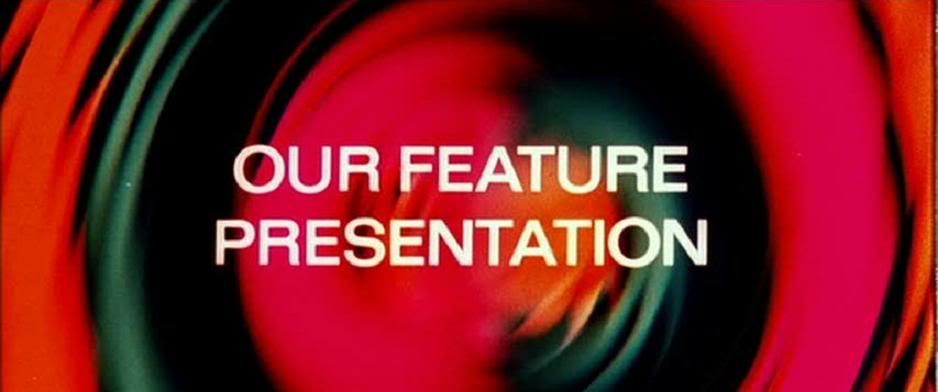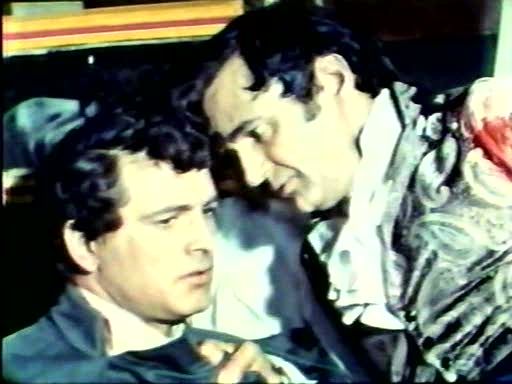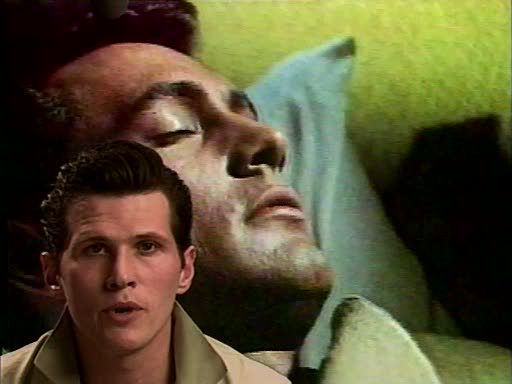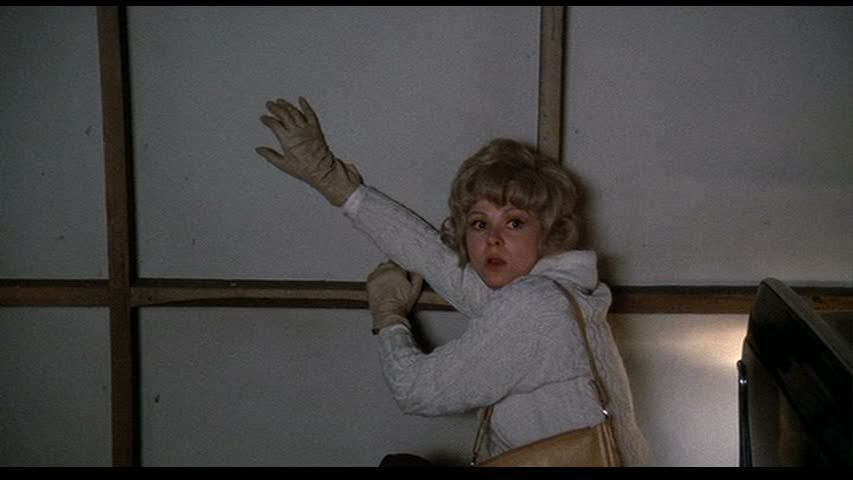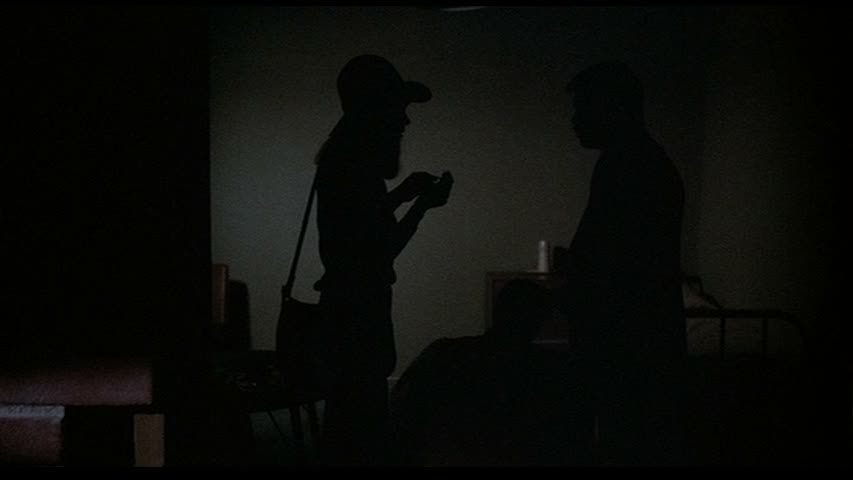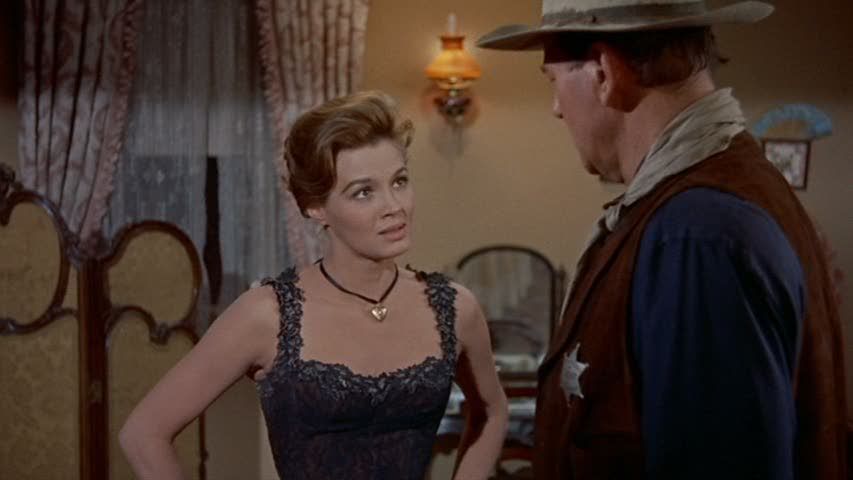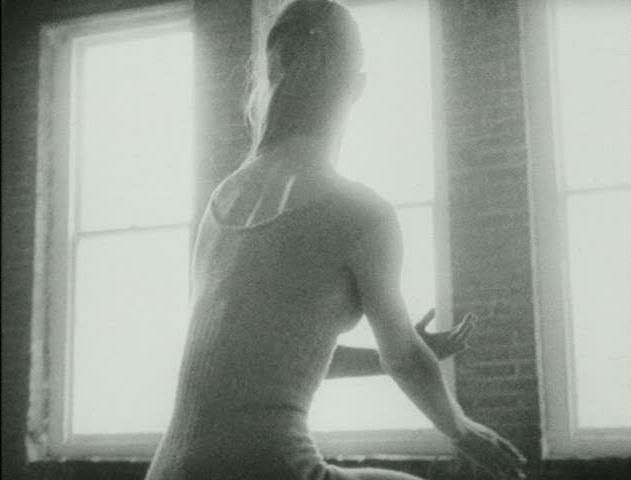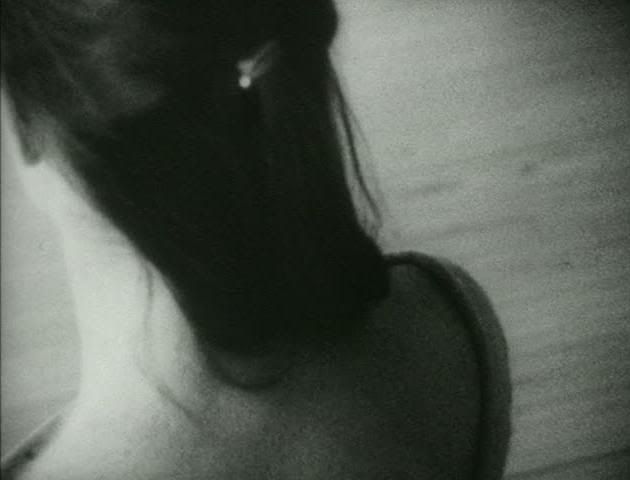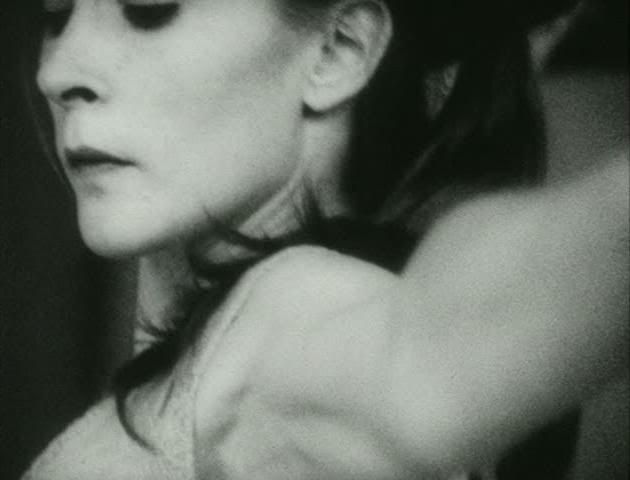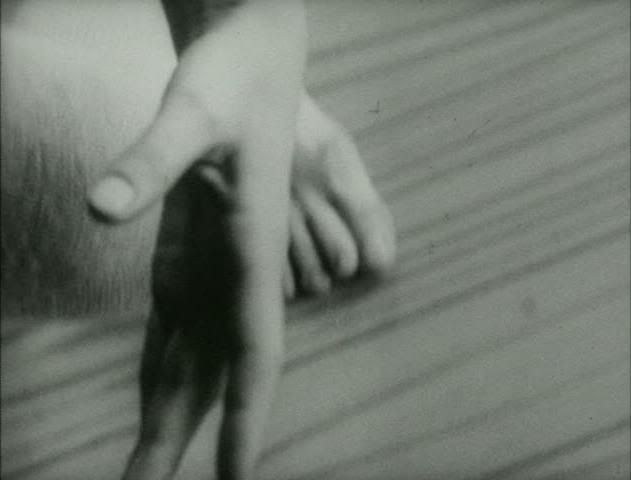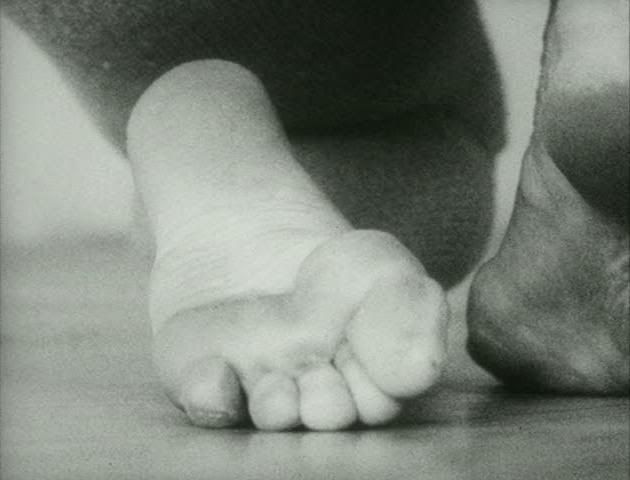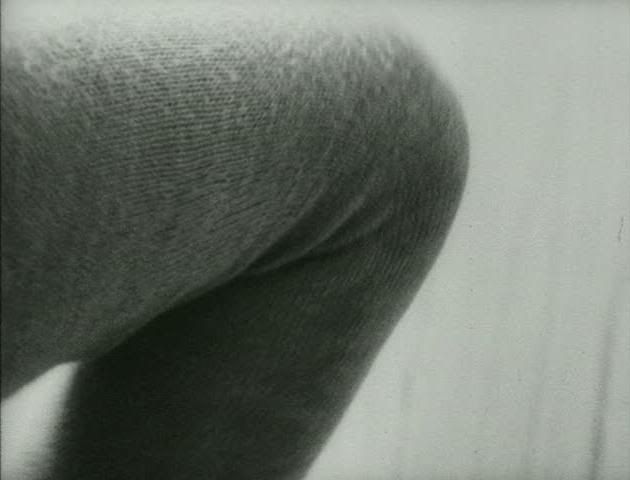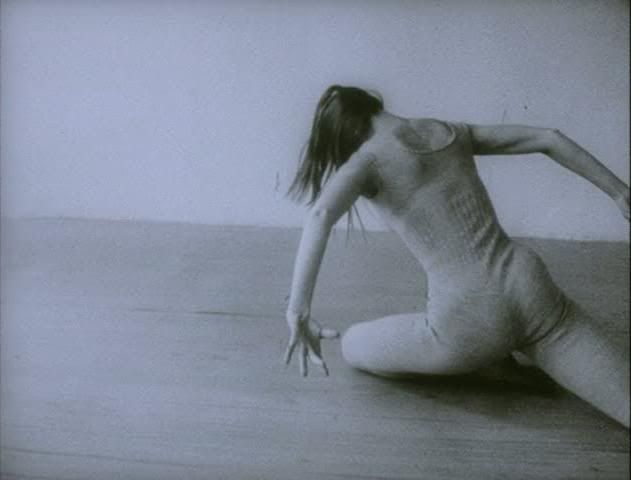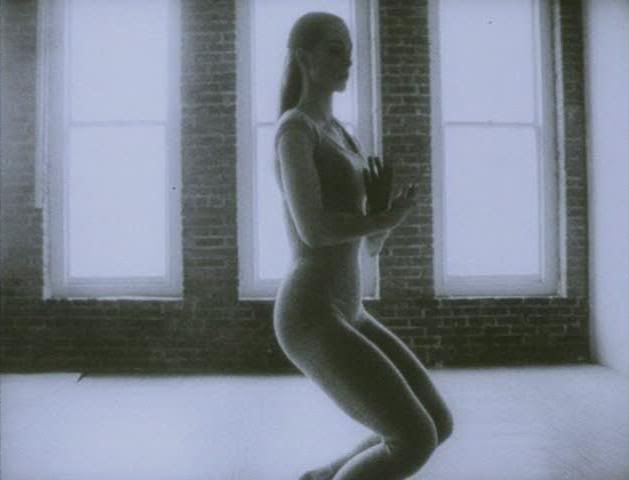[This is part of a series of posts in which I explore the work of the Austrian DVD label Index DVD. This company has released a great deal of valuable European experimental cinema onto DVD, naturally focusing on the Austrian underground but occasionally branching out as well. Index's DVDs are distributed in the US by Erstwhile Records, so anyone intrigued by Index's catalog should take a look and support the fine work both these companies are doing for obscure and avant-garde cinema.]


Manfred Neuwirth's
[ma] Trilogy consists of three formalist travelogues, each one made with the same deliberate, stripped-down aesthetic, each one a strangely haunting attempt to make the everyday seem fresh and new. The three films are
Tibetan Recollections (shot in Tibet between 1988 and 1995),
Manga Train (made in Japan) and
Magic Hour (in which Neuwirth returns to his native Austria for his footage). Each film utilizes the same very basic style: a series of straightforward single shots, all of the same length, separated from one another by a fade and a few seconds of black leader. The shots are mostly static, and often shot from an oblique, intimate angle that can make familiar objects seem unusual: Neuwirth's compositions often require a moment or two of mental adjustment even to determine what one is looking at, as in a shot where he points his camera at a section of railing during an escalator ride. He's encouraging the contemplation of familiar sights from new angles, delving into the textures of the world; his camera is frequently close enough to capture nuances of texture that go unseen from an ordinary vantage point.
When his camera moves, it's often because he's filming from a train or other moving vehicle; less frequently, he pans slowly across a surface to probe its intricacies. He often films through glass or other reflective surfaces, capturing the eerie layering that occurs when reflections overlay more solid structures. In one of the most hauntingly beautiful shots of
Manga Train, Neuwirth shoots from inside a bus, watching as the people passing by outside the window become spectral and intangible, seeming to fade into translucent specters through the distorting lens of the bus window. At one point in
Tibetan Recollections, the camera is pointing into the sun from the front of a jeep running along a bumpy road. As the jeep bounces slowly along the road, the angle of the vehicle changes, causing the sun's rays to fluctuate from a tiny halo off in the upper left corner to a blinding explosion, spreading its rays like tentacles across the frame. Throughout all three films, the image is also slowed down slightly, giving the motion within the frame a staggered, jerky quality to it, the distinctive look of video manipulation.
Neuwirth pairs these images with a dense, layered soundtrack, which fades in and out along with each image; the sound is perfectly chosen for each image, though it is never purely diegetic in its relationship to the image. Rather, Neuwirth subtly tweaks the expectations of realism by selecting naturalistic field recordings from each place he shoots. But the sound can never be synced with the slowed-down video images, and in any event it's apparent that Neuwirth's recording and editing methods further subvert the sound/image relationship. For one thing, his sounds have a clarity and near-artificial crispness that suggests very close-mic'ed sound sources. At one point in
Magic Hour, a man pours a glass of beer in slow motion, and the moment when the liquid begins to ooze into the glass is accompanied by a crackling, fizzing cacophony, not so much a naturalistic representation of beer being poured as a cartoony symbol of it.
Other sounds are more natural but no less manipulated for it, as Neuwirth arranges each shot's soundtrack into a layered sound art construction. He carefully mixes together dull mechanical rumbling, the indistinct blur of voices in public spaces, distorted snatches of pop music blaring from primitive speakers, the sounds of children playing, crickets chirping, the crunching of footsteps in gravel, sighing, coughing, gurgling noises, rhythmic tapping and bursts of experimental jazz or electronic music. All these sounds come together to create soundtracks where the noises of ordinary life are recontextualized as a kind of music, much as in the field recording work of sound artists like Jeph Jerman and Toshiya Tsunoda. Neuwirth's soundtracks suggest a surface realism that's fractured by his most obvious manipulations, and also by the disjunctions between his crystalline sounds and the often gauzy, grainy quality of his images.


In many ways, all three films of the
[ma] Trilogy are best considered as one complete work, so unified are they in approach and form, but there are nevertheless significant differences between the films.
Tibetan Recollections was the first of these films, and it is the most obviously distinct from the other works of the trilogy. Its opening image is also deliberately separate from the rest of the film, introduced as a prologue before even the title. This image is a distorted video of Chinese soldiers arresting a Tibetan monk, the image cast in a blurry grayish haze, its video game-like quality reminiscent of Jean-Luc Godard's own experiments in video manipulation, as well as "the Zone" of Chris Marker's
Sans soleil. The content of the image also recalls another Godard film, his brief
Je vous salue, Sarajevo, an analysis of a photo of military brutality from the Balkan conflicts. Neuwirth holds the shot, watching as the men push the monk towards a waiting van, until one of the Chinese soldiers turns around, revealing an awkward grin as he casts a sidelong glance at the camera. This moment immediately announces
Tibetan Recollections as a political work, and one cannot help but interpret the remainder of the film through the lens of this single introductory image.
Indeed, the rest of
Tibetan Recollections rarely returns to such political territory, and never explicitly: there's an image of a female soldier in a movie on TV, and several shots of Tibetan monks, but nothing that suggests a return to the violence and oppression glimpsed so briefly in the opening. Instead, Neuwirth seems to be suggesting that the political can be located in the everyday, in the ordinary façades of buildings and the sounds of marketplaces and the popping of fireworks in a pitch-black night.
Tibetan Recollections becomes an attempt to capture the fabric of ordinary life under oppression, the placid normal existence that can be shattered at any moment by violence. Neuwirth's film is then the calm before the storm; his prologue could just as easily be an epilogue, showing what happens next.
If
Tibetan Recollections, as the first film of the trilogy, is the roughest and the most prosaic,
Manga Train displays a more playful sensibility, as befitting a film which documents not oppression but the vibrancy and eclecticism of a society seemingly dominated by pop culture. The film's second shot, after a stoic observation of salarymen reading on a train, is an image of a trio of youths earnestly dancing to 50s rock n' roll in a public park. The two guys — one a Japanese James Dean in a bright red jacket and sunglasses, the other stocky and tattooed — both have puffed-up pompadours. They sway and shake their hips to the music, doing turns in perfect synchronization, and when the image fades to black one gets the distinct impression that the dancers would continue for hours afterward. This installment of the trilogy is packed with imagery like this, layered anachronisms and oddball pop cultural pastiches. In one scene, Neuwirth's camera observes a strange semi-public video display that shows abstract, rapidly morphing shapes on a giant screen. Under an overhang, people sit in an auditorium to watch, while outside two schoolgirls hover around smaller monitors, presumably watching the same thing. Neuwirth's camera watches them all, a meta-commentary on video and the gaze.
There's also a spirit of irreverent play in many of the images Neuwirth captures here. At one point, while filming from a static viewpoint to the side of a moving walkway, a group of passing girls notice the camera and begin mugging for it as they glide by, making funny faces and flashing peace signs as they stare into the camera, as though curious about its purpose. This playfulness and openness is perhaps part of what Neuwirth is after in probing into ordinary life, though he seems just as interested in the intimate examination of a vending machine or the dancing video noise created by slowing down an image of a bubbling tank of water.


This patient, poetic sensibility is most fully developed in
Magic Hour, the final film of the trilogy and its grandest statement. Here, back in his homeland, Neuwirth's images fully take on a romantic, mysterious quality, finding unexpected beauty everywhere he looks. The film opens with a beautiful shot through the condensation on a train window, turning the passing landscape into an amorphous green blur punctuated by occasional interjections of other bright colors. Neuwirth returns again and again to images of water, like a closeup of a section of wooden railing where rainwater is pooling, while the falling rain, slowed down, becomes a haze of tiny chalk marks accompanied by a gentle gurgling. There's something sensuous in these images, something tactile, even where there's nothing to see: images of black, deep night, sporadically split apart by flashes of lightning, have a grainy depth and intensity that's never purely black, always full of roiling dark blues and purples, tangling together within the darkness.
Even in the daytime, in the most prosaic settings, Neuwirth is able to discover something strangely beautiful. In one scene, he watches a soccer match through a metal fence, subtly racking the focus so that the diamond-shaped grate of the fence shifts out of focus, layering a green haze over the distant players, so that watching the game is suddenly like watching faraway ghosts flitting across a field for some unfathomable purpose. In another shot, the camera frames a table sitting out in the open air, facing a mountain, with a line of empty glasses scattered across it. On the soundtrack, voices chatter and laugh as if at an invisible party, as though the image was showing a party's aftermath while the soundtrack lagged behind, now-departed voices suggesting the frenzied activity that had preceded this tranquil image. In another shot, Neuwirth films a field through such a dense cloud of insects and pollen that the screen becomes a pointillist blur of white dots, all but obscuring the view of the field itself. This shot is accompanied by a low electric hum, matching nature's own visualization of white noise.
These images are haunting and awe-inspiring, as are more prosaic moments like the joyous look on a little girl's face after she's handed an ice cream pop, or the sizzle of between-stations static and snippets of song as a man's fingers tune a radio dial. Taken as a whole, Neuwirth's
[ma] Trilogy is a sensuous, unforgettable vision of life from up close, life in the forgotten corners, in quiet moments and frenzied ones, contemplative and active, natural and mechanical.
